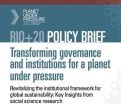November 24, 2011 (Press-News.org) Almost a year ago, the Federal Motor Carrier Safety Administration (FMCSA) proposed new limits on Hours of Service (HOS) rules for commercial drivers. While the intent was to improve highway safety for all who travel by limiting fatigue among truck drivers, the proposed changes have come under fire from trucking advocacy groups as having little impact on highway safety. The proposed changes in hours of service have not yet been finalized.
Existing Hours of Service Limitations for Commercial Drivers
HOS regulations generally apply to all drivers of commercial vehicles. A commercial vehicle weighs 10,001 pounds or more, has a gross vehicle weight or gross combination weight of 10,001 pounds or more; is made to transport 9 or more people for compensation or 16 or more people without compensation; or is used to transport hazardous chemicals of a quantity that requires a placard.
HOS limits are determined by the load a commercial driver is carrying. According to the FMCSA, if the driver is transporting property, he or she is limited to:
- 11 hours of driving after 10 hours off
- 14 hour on-duty driving limit
- 60/70 hour driving limit in 7/8 consecutive days
If a commercial driver is transporting people, he or she is limited to:
- 10 hours of driving after 8 hours off
- 15 hour on-duty limit
- 60/70 hour driving limit in 7/8 days
The proposed rule change to hours of service would affect mostly those who drive commercial trucks transporting property.
Proposed Hours of Service Limitations for Commercial Truck Drivers
The new rules related to HOS would be as follows:
- Off duty period: This would not change and would still be 10 hours.
- Driving window: Limited to 14 hours and must be released from duty at the end of the driving window.
- Maximum driving time within driving window: 10 or 11 hours
As with any federal regulations, there are more details than those outlined here, as well as exceptions to the proposed changes noted.
The Importance of Hours of Service Limitations for Truck Drivers
According to Transportation Secretary Ray LaHood, hours of service rules are intended to, "help create an environment where commercial truck drivers are rested, alert and focused on safety while on the job." The desired outcome of the HOS regulations is to minimize the risk of truck accidents related to driver fatigue and promote safety for all those who travel the Atlanta, Georgia and United States highway systems.
If you've been injured in a motor vehicle accident, whether with a semi-truck, another commercial truck or van, or any other motor vehicle on the roadway, an experienced car accident attorney in your area can work with you to recover from the at-fault driver.
Article provided by W. Winston Briggs Law Firm
Visit us at www.winstonbriggslaw.com
Hours of Service Rules for Commercial Truck Drivers Traveling Through Atlanta
Driver fatigue is one cause of commercial truck accidents in Georgia and throughout the U.S. Hours of service limitations are intended to cut down on tired driving, drowsy driving and/or fatigued driving, making the roads safer for all who travel.
2011-11-24
ELSE PRESS RELEASES FROM THIS DATE:
Supercool
2011-11-24
SALT LAKE CITY -- We drink water, bathe in it and we are made mostly of water, yet the common substance poses major mysteries. Now, University of Utah chemists may have solved one enigma by showing how cold water can get before it absolutely must freeze: 55 degrees below zero Fahrenheit.
That's 87 degrees Fahrenheit colder than what most people consider the freezing point of water, namely, 32 F.
Supercooled liquid water must become ice at minus 55 F not just because of the extreme cold, but because the molecular structure of water changes physically to form tetrahedron ...
Dana-Farber/Children's Hospital Boston study identifies possible therapy for radiation sickness
2011-11-24
BOSTON—A combination of two drugs may alleviate radiation sickness in people who have been exposed to high levels of radiation, even when the therapy is given a day after the exposure occurred, according to a study led by scientists from Dana-Farber Cancer Institute and Children's Hospital Boston.
Mouse studies of other potential therapies suggest they would be effective in humans only if administered within a few minutes or hours of radiation exposure, making them impractical for use in response to events involving mass casualties. In contrast, the larger time window ...
UN overhaul required to govern planet's life support system: Experts
2011-11-24
Reducing the risk of potential global environmental disaster requires a "constitutional moment" comparable in scale and importance to the reform of international governance that followed World War II, say experts preparing the largest scientific conference leading up to next June's Rio+20 Earth Summit.
Stark increases in natural disasters, food and water security problems and biodiversity loss are just part of the evidence that humanity may be crossing planetary boundaries and approaching dangerous tipping points. An effective environmental governance system needs to ...
Disability Insurance Claim Denied? An ERISA Lawsuit Could Help
2011-11-24
Private disability insurance can be a significant source of value for employees and their families, and they expect to be able to rely on it in their times of need. But what happens when an employee's disability insurance claim is denied?
A comprehensive federal law known as the Employee Retirement Income Security Act of 1974, or ERISA, protects the interests of participants in many types of insurance plans. ERISA sets standards for the administration of benefit plans, including the proper procedure for appealing a denial of a claim for benefits. If the claims process ...
Earth's core deprived of oxygen
2011-11-24
Washington, D.C. — The composition of the Earth's core remains a mystery. Scientists know that the liquid outer core consists mainly of iron, but it is believed that small amounts of some other elements are present as well. Oxygen is the most abundant element in the planet, so it is not unreasonable to expect oxygen might be one of the dominant "light elements" in the core. However, new research from a team including Carnegie's Yingwei Fei shows that oxygen does not have a major presence in the outer core. This has major implications for our understanding of the period ...
New butterfly species identified in Yucatan peninsula
2011-11-24
About 160,000 species of butterflies and moths are already known, but scientists believe that a similar number still remain undiscovered. Identification and characterization of these species can be complicated by the fact that each species has an immature caterpillar and a mature butterfly form, as well as the reliance on the physical appearance for classification.
Now, though, researchers report that a type of DNA analysis called "barcoding" may provide a powerful tool in this effort, according to a study published in the Nov. 16 issue of the online journal PLoS ONE. ...
Public restrooms ripe with bacteria, study says
2011-11-24
Everyone wonders what bugs might be lurking in public bathrooms. Now researchers are using novel genetic sequencing methods to answer this question, revealing a plethora of bacteria all around, from the doors and the floors to the faucet handles and toilet seats, with potential public health implications, as reported Nov. 23 in the online journal PLoS ONE.
Led by Gilberto Flores and Noah Fierer of the University of Colorado, Boulder, the researchers investigated 12 public restrooms, 6 male and 6 female, in Colorado. Using a high-throughput genetic sequencing technique, ...
Overweight individuals more susceptible to risk factors for further weight gain
2011-11-24
Some risk factors for obesity become stronger the more overweight a person is, according to a study published Nov. 23 in the online journal PLoS ONE.
Paul Williams of Lawrence Berkeley National Laboratory in Berkeley, California found that certain risk factors – lower education level, parental obesity, and high meat/low fruit diets – produced a greater risk for excess body weight for subjects with a higher body mass index (BMI) than for those with lower BMI.
Based on these results, Williams proposes that environmental factors that result in little to no weight gain ...
Doctors can do better if they learn from their mistakes
2011-11-24
We rely on our doctors to make appropriate decisions for our treatment, but this process can be subject to a variety of potentially conflicting influences. To identify what makes a good decision-maker, a team of researchers, led by Read Montague, PhD, director of the Human Neuroimaging Laboratory at Virginia Tech Carilion Research Institute, tested 35 experienced physicians for their ability to make appropriate treatment choices, and found that the doctors who performed best were those who learned from both their successes and failures, rather than focusing just on the ...
Improper Diagnosis and Treatment of Heart Attacks, Cardiac Arrest and Heart Failure
2011-11-24
A person goes to the hospital after feeling tightness in his chest. There, a physician runs a battery of tests to determine the cause. The tests show that nothing is seriously wrong, even though the patient is sure his pains are abnormal. The physician gives the patient healthy-eating instructions, prescribes an aspirin regimen and may even prescribe anti-anxiety medication for panic attacks. A few days later, the patient dies from cardiac arrest.
This is a tragic story that we have heard far too many times as Cleveland medical malpractice lawyers. While diagnostic advancements ...
LAST 30 PRESS RELEASES:
B cells transiently unlock their plasticity, risking lymphoma development
Advanced AI dodel predicts spoken language outcomes in deaf children after cochlear implants
Multimodal imaging-based cerebral blood flow prediction model development in simulated microgravity
Accelerated streaming subgraph matching framework is faster, more robust, and scalable
Gestational diabetes rose every year in the US since 2016
OHSU researchers find breast cancer drug boosts leukemia treatment
Fear and medical misinformation regarding risk of progression or recurrence among patients with breast cancer
Glucagonlike peptide-1 receptor agonists and asthma risk in adolescents with obesity
Reviving dormant immunity: Millimeter waves reprogram the immunosuppressive microenvironment to potentiate immunotherapy without obvious side effects
Safety decision-making for autonomous vehicles integrating passenger physiological states by fNIRS
Fires could emit more air pollution than previously estimated
A new way to map how cells choose their fate
Numbers in our sights affect how we perceive space
SIMJ announces global collaborative book project in commemoration of its 75th anniversary
Air pollution exposure and birth weight
Obstructive sleep apnea risk and mental health conditions among older adults
How talking slows eye movements behind the wheel
The Ceramic Society of Japan’s Oxoate Ceramics Research Association launches new international book project
Heart-brain connection: international study reveals the role of the vagus nerve in keeping the heart young
Researchers identify Rb1 as a predictive biomarker for a new therapeutic strategy in some breast cancers
Survey reveals ethical gaps slowing AI adoption in pediatric surgery
Stimulant ADHD medications work differently than thought
AI overestimates how smart people are, according to HSE economists
HSE researchers create genome-wide map of quadruplexes
Scientists boost cell "powerhouses" to burn more calories
Automatic label checking: The missing step in making reliable medical AI
Low daily alcohol intake linked to 50% heightened mouth cancer risk in India
American Meteorological Society announces Rick Spinrad as 2026 President-Elect
Biomass-based carbon capture spotlighted in newly released global climate webinar recording
Illuminating invisible nano pollutants: advanced bioimaging tracks the full journey of emerging nanoscale contaminants in living systems
[Press-News.org] Hours of Service Rules for Commercial Truck Drivers Traveling Through AtlantaDriver fatigue is one cause of commercial truck accidents in Georgia and throughout the U.S. Hours of service limitations are intended to cut down on tired driving, drowsy driving and/or fatigued driving, making the roads safer for all who travel.

